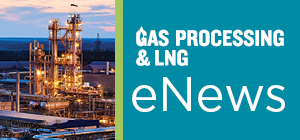Fugitive emissions from gas compressors represent a significant issue for operators, both in terms of sustainability and operational efficiency. While leaks will not result in immediate problems or incur unplanned downtime, they should be addressed at the earliest opportunity.
Combined heat and power (CHP), also known as cogeneration, converts one form of energy to two usable forms, typically heat and power. This article dives into several considerations that must be addressed when incorporating cogeneration into a facility.
As with many industrial processes, the ability to accurately measure the concentration of bulk gas—in this case CO2 (carbon capture, utilization and storage)—along with any impurities within it, provides significant benefits. This article details the latest technologies in gas analysis for these types of applications.
This article details the maximum fill volume for propane, butane and LPG storage tanks at processing facilities.
This article provides a summary of active gas processing and LNG projects around the world, including total project numbers, and market share by region and activity level.

- Woodfibre LNG receives BCEAO order to move floatel to site to house non-local workforce
- QatarEnergy, Exxon seek to remove contractor from Texas gas project
- Veolia, Waga Energy and ENGIE collaborate to develop renewable natural gas industry in France
- Congo Brazzaville becomes an LNG exporting country
- Fulcrum LNG to pair with McDermott, Baker Hughes for Guyana gas project
- EU approves law to hit gas imports with methane emissions limit
- Veolia, Waga Energy and ENGIE collaborate to develop renewable natural gas industry in France
- Hawai'i Gas selects Eurus Energy America, Bana Pacific for hydrogen and renewable natural gas projects
- TotalEnergies increases LNG deliveries to Asia with two new contracts
- Desert Mountain Energy Corp. initiates helium production














